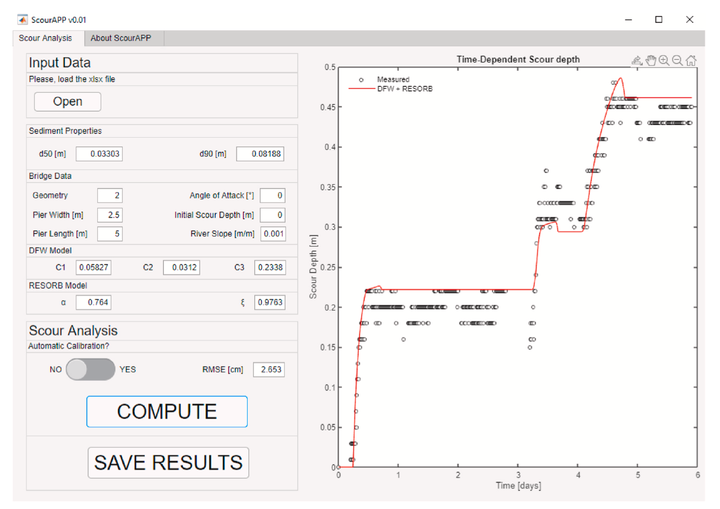Relative importance of parameters controlling scour at bridge piers using the new toolbox ScourAPP

Abstract
The new toolbox ScourApp is presented and applied for analysis of the complex interactions between local scour and sediment deposition at bridges during floods and to determine the relative importance of the controlling parameters on scour depth. ScourApp represents the time-dependent sediment transport processes through modern empirical formulations to compute the evolution of scour depth at a bridge pier. Results show that the mathematical model reproduces observed scour depths with high accuracy and confirm that ScourApp is a suitable tool for scour analysis. The model parameters controlling the time-dependent scour depth were the equilibrium scour depth, and two constants representing the effects of pier geometry, flow and sediment. Sensitivity analysis showed that all three scour model parameters exhibited a nearly linear relation with the final scour depth. Moreover, results considering sediment deposition obtained for the Rapel Bridge showed that scour depths are highly sensitive to the sediment supply rate. ScourApp is recommended in scour assessment for bridge planning, design, management, and forensic analysis, as well as for engineering education.